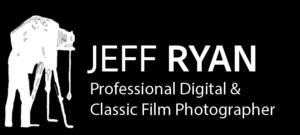OTTAWA PROFESSIONAL PHOTOGRAPHER RYAN STUDIO / PHOTOGRAPHY BLOG EDUCATIONAL ARTICLE “VIEWFINDERS PART 2” / PHOTOGRAPHY SERVICES TO / KANATA / STITTSVILLE / NEPEAN / BARRHAVEN / MANOTICK / ORLEANS
MARCH, 2021
“CAMERA CORNER”–PHOTOGRAPHY ARTICLE / COURSE-WORKSHOP / PREPARED BY OTTAWA PROFESSIONAL PHOTOGRAPHER JEFF RYAN PHOTOGRAPHY / TEACHER / INSTRUCTOR / SERVING THE REGIONS OF OTTAWA / KANATA / ORLEANS / STITTSVILLE / PROFESSIONAL PORTRAIT STUDIO PHOTOGRAPHER / ONTARIO
ARTICLE: “VIEWFINDERS: PART 2”. WHAT YOU SEE IS WHAT YOU GET?
Continuing our discussion on focusing screens, I would like to reflect on the standard and full frame screens offered. The viewfinder system I am currently using is designed for people like myself who require optical correction. I wear eye glasses and find them to be very restricting when trying to comfortably place my eye close to the eyepiece to identify exactly what is featured on the ground glass of my camera. The solution to this problem is to purchase a camera with a viewfinder which enables you to view practically the entire scene your focusing on from a slight distance away from the eyepiece. Mine is called the “high eye point” system, and is beneficial when composing any type of photograph, even when the camera is mounted upside down for macro photography. When it comes time to compose a photograph, be aware that most camera viewfinders have a tendency to eliminate approximately 10 per cent of your actual viewing area. Where this affects your image is always at its’ circumference.
How this relates to your actual viewing area is as follows: what you see in your viewfinder is not what you get in your finished photograph. So, when designing an image in your camera a good rule of thumb to follow is this. Take one or two steps backwards, or zoom your lens outwards slightly, when you think you have a satisfactory composition. This will compensate for your camera’s inherent cropping tendencies and will produce a final result closer to your initial visualization. Added to this problem is the negative holder used in the printing process which also masks out a certain portion of the perimeter of your negative/transparency. When I purchased my camera, I made certain that it came equipped with a viewfinder that virtually guaranteed that everything I saw on the focusing screen would appear in the finished photograph. Now I am able to design tightly cropped images and am assured that nothing outside the perimeter of my screen will be included in the photograph. The screen I’m referring to has approximately 98.5 percent efficiency, so I can rest assured that what I see “is exactly what I’m going to get” on my finished prints or slide imagery.
The next time you’re making a composition, try to pay great attention to the edges of your viewfinder and see if your final prints did, in fact, include exactly what you placed on the focusing screen when you made the exposure. Receiving slides (transparencies) back from the lab will always give you much more predictability, and a better idea of your initial composition since they have not being cropped in the printing stage by a lab technician, but mounted only in a plastic viewing sleeve.
Should you own an older model camera, a recommendation is that you take your camera into a reputable store and speak to a knowledgeable sales clerk or repair technician regarding removal of your old style focusing screen, and replacing it with a newer one. Several camera’s have been equipped with user friendly prism heads, (the top part of your camera where you look through to compose a photograph) which are completely removable. Once removed, you are then able to access the focusing screen and execute it’s removal as well. Many camera’s from approximately 1975 downwards do not allow the removal of the screen. It has been permanently locked in at the time of manufacture thereby preventing interchange ability with the more current screens. If you do find a technician who is willing to remove your original screen from your camera please consider this. Even if you are able to remove the old screen and replace it with a new larger viewing area one, the under sized mirror box of your camera could possibly vignette the perimeter of your new screen, completely defeating your purchase of it. In some extreme instances, I have seen new screens filed down to fit old style mirror boxes. It really boils down to buyer beware.
Another point worth discussing in brief regarding focusing screens is that it isn’t necessary to purchase your camera manufacturers model. Years ago, photographers were complaining to camera designers indicating how dark the actual image is on the focusing screen, particularly when they are producing photographs at night in hotels or home like settings. Generic camera and accessory companies started producing a much better, brighter viewing screen that soon attracted a great deal of attention. They claim that when using their new bright screen, your image can be up to approximately 2-3 times brighter. While I have never actually made comparisons mathematically, I must agree that they unquestionably increase brightness which will aid you in your focusing techniques; especially if your using your camera in low light levels in the manual focus setting. Some camera’s I used were so dark when viewing through them, you could never be sure you were actually in focus or not which led me to pre-focussing the lens at pre-determined distances. On our next get together we will be starting a thorough discussion regarding lenses available for you to select from at your local camera store or on line outlet.
WITH GOOD WISHES,
JEFF RYAN PHOTOGRAPHER/OTTAWA/KANATA PROFESSIONAL PORTRAIT PHOTOGRAPHY/IMAGING STUDIO, ONTARIO
Email—jeffryan@storm.ca
www.jeffryan-photography.com
613.599.5363
